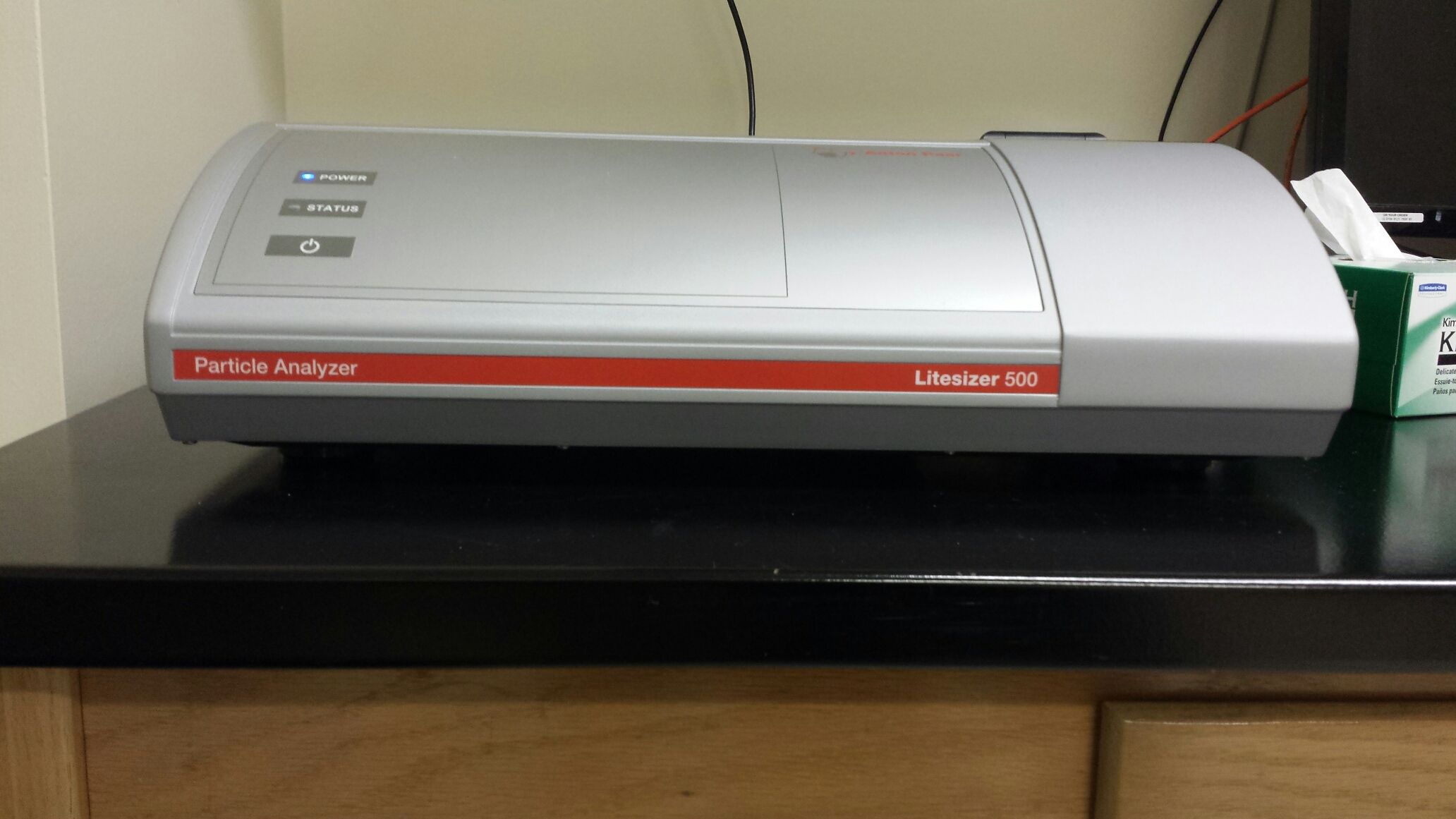Fees
Microscopy Suite Equipment Fees
Fees/rates for use of equipment in the Microscopy Suite determined through analysis by Government Costing, University of Illinois. In effect starting August 1, 2021; subject to change.
Anton Paar Litesizer Particle-Sizing System

The Litesizer™ 500 is an instrument for characterizing nano- and microparticles in dispersions and solutions. It determines particle size, zeta potential, and molecular mass by measuring dynamic light scattering (DLS), electrophoretic light scattering (ELS), and static light scattering (SLS).
Moreover, the Litesizer™ 500 is the only DLS-based particle analyzer that is able to perform a straightforward measurement of the sample’s refractive index.
A highlight of the Litesizer™ 500 is its ingeniously simple software. We have created a one-page workflow, where input parameters, results and analysis are all on a single page: You can set up your experiments in a few seconds, and produce the analyses and reports you need at the touch of a button.
Key Features
Continuous transmittance measured automatically
Transmittance gives you instant feedback about your sample, and allows automatic optimization of measurement parameters (angle, focus position, and measurement duration).
Accurate determination of the refractive index
While for most particle analyzers these indices must be determined from external sources, the Litesizer™ 500 is able to measure the refractive index for the exact wavelength and temperature of your experiment. This ensures maximum accuracy of particle size and zeta potential results under all experimental conditions.
The Litesizer™ 500 determines the solvent refractive index within ±0.5 %, as defined by ISO 22412:2017 concerning the accuracy of the refractive index required for DLS.
Particle-size measurements: Unprecedented resolution
Several different particle sizes in a single suspension can be precisely resolved, thanks to highly developed algorithms in the firmware.
cmPALS – new patented technology for zeta potential
With cmPALS (European Patent 2 735 870), measurements can be performed at much lower applied electric fields, and within significantly shorter measuring times, thereby enabling reliable measurements of even highly sensitive samples.
Unique Ω-shaped capillary tube for zeta potential
Measurements are more stable and reproducible because of the unique Ω-shaped capillary in the cuvette.
Ingeniously simple software, Kalliope™
Kalliope™ provides an intuitive one-page workflow, where input parameters, measurements and analyses are all at hand. Kalliope™ is fully compliant with the FDA’s 21 CFR Part 11 regulations.
You may find this video helpful:
Introduction to Dynamic Light Scattering Analysis
For additional information about this piece of equipment, see the Calendars, Contacts, and Fees pages.
| Primary Contacts | |
|---|---|
| Secondary Contacts | |
| Manufacturer | Anton Paar |
| Equipment Model | Litesizer 500 |
| Location | B674 |
| Phone Numbers |
Notes:
* The fee for use is added to our purchase cost for the specific precious metal (gold, gold-palladium, or platinum) expended during coating. Gold and gold-palladium are charged at $0.30/nm, and platinum is charged at $0.45/nm. The added fee is easy to determine for the dual-metal evaporator, for which total thicknesses are reported in nm. For the sputter coaters, at 65 mTorr and 40 mA, gold coats at 3 nm/10 seconds, gold-palladium coats at 1 nm/10 seconds, and platinum coats at 1 nm/10 seconds. So a standard 70-second coat of gold will cost an additional (21 x 0.30) $6.30, a 70-second coat of gold-palladium will cost (7 x 0.30) $2.10, and a 70-second coat of platinum will cost (7 x 0.45) $3.15.